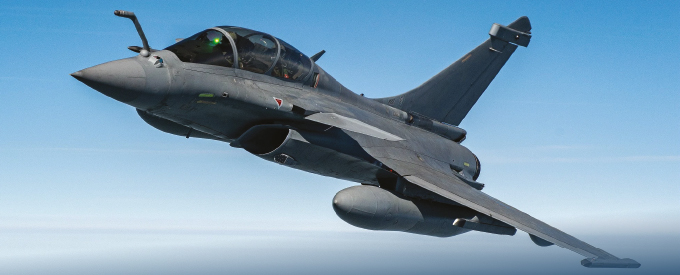2024-10-07
Dassault Secures Deal to Deliver 12 Rafales to Serbia
In a significant boost to its international presence, Dassault Aviation has secured a contract to provide 12 Rafale fighter jets to the Serbian Armed Forces.
The agreement was signed recently in Belgrade by Éric Trappier, Chairman and CEO of Dassault Aviation, and Bratislav Gašić, Minister of Defence of the Republic of Serbia. The signing ceremony was witnessed by Emmanuel Macron, President of the French Republic, and Aleksandar Vučić, President of the Republic of Serbia.
The contract reflects the importance of the bilateral relationship between France and Serbia, and testifies to the determination of both Presidents to make the partnership a success.
“On behalf of Dassault Aviation and its partners, I would like to thank the Serbian authorities for the confidence they have placed in us by choosing the Rafale, and assure them of our total commitment to making its integration into the Serbian Armed Forces a success. Serbia’s decision to equip itself for the first time with a Dassault aircraft confirms the Rafale’s operational superiority and its proven excellence in serving the sovereign interests of a nation,” declared Trappier.
Omnirole Aircraft
When the Rafale programme was initiated, the French Air Force and Navy issued a joint requirement for a versatile omnirole aircraft to replace the seven combat aircraft types then in service.
The new aircraft was tasked with fulfilling an extensive range of missions, including air defence, air superiority, air policing, reconnaissance, nuclear deterrence, precision air-to-ground strikes, close air support, anti-ship operations, and even buddy-buddy refuelling.
From the outset, these diverse requirements were integrated into the Rafale’s development, resulting in an adaptable platform that exceeds the demands of each mission profile. Renowned for its versatility, the Rafale has proven to be a formidable “Force Multiplier” across all mission types.
The aircraft is expected to remain a critical asset for the French armed forces well into the 2050s.
Three Variants
The fighter comes in three variants: the Rafale C, a single-seater for land-based operations; the Rafale M, a single-seater designed for carrier-based missions; and the Rafale B, a two-seater used for land-based operations. All three variants share the same airframe and mission system, with the primary differences between the naval and land versions being limited to the undercarriage and the arresting hook.
Electronic Scanning Radar
It is the first European combat aircraft to use an electronic scanning radar. Developed by Thales, the RBE2 radar has benefitted from a massive research effort and from Thales’ unmatched know-how based on past experience. Compared to radars with conventional antennas, unprecedented levels of situational awareness are attained with earlier detection and tracking of multiple targets.
Data Fusion
The core of these enhanced capabilities of the Rafale lies in a new “Modular Data Processing Unit” (MDPU) that handles the data fusion.
The MDPU is the cornerstone of the Rafale’s upgradeability. It allows a seamless integration of new weapons and new capabilities to maintain the warfighting relevance of the Rafale over the years as tactical requirements evolve, and as the computer industry keeps rolling out new generations of processors and software.
It hinges on the computing power of the MDPU to process data from the RBE2-AESA electronic scanning radar, the “Front Sector Optronic” (FSO) system, the Spectra electronic warfare system and the data broadcast by the other battlefield players via the data link.
HOTAS Concept
Dassault Aviation has developed an intuitive and highly ergonomic pilot interface (MMI) for the Rafale, incorporating the “Hands on Throttle and Stick” (HOTAS) concept.
The interface integrates a sophisticated suite of equipment, offering several key capabilities: short-term actions are supported by head-up flying with a wide-field-of-view “Head-up Display” (HUD) and a helmet-mounted display; for medium- and long-term actions, pilots can assess the overall tactical situation using a multi-image “Head-Level Display” (HLD), which is synchronised with the helmet display for rapid eye transitions between cockpit and external visuals; and system resources are managed via left and right colour touch screens.
The cockpit design ensures that aircrews benefit from everything expected of an omnirole fighter, including a wide field of view in all directions, superior agility, increased G-tolerance with 29° tilted seats, and an efficient air conditioning system proven in all climates.


No Comments